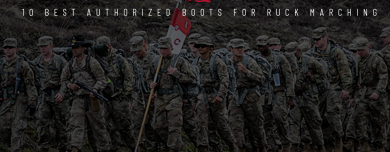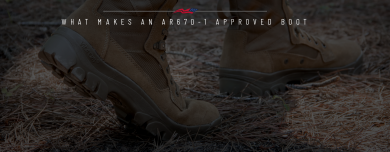
I recently wrote about the topic of assault rifles and mentioned something about their history. One of the things I talked about was the first assault rifle, the Sturmgewehr 44, but I only had time for a quick discussion of it. I thought it might be interesting to look at it in a bit more detail and see how it compares with its more modern descendants.
German infantry began the Second World War with the Mauser Kar98k as their standard rifle. This was an excellent design – well made, robust and very accurate – but it was already showing its age by 1939. It was basically a shortened and modernized version of the Gew98 used in the First World War, and while it was more than a match for the Soviet Mosin-Nagant M91/30, it didn’t match up to the rifles of the Western Allies. It had a five-round magazine, compared to eight rounds for the M1 Garand and ten for the British Number 4 Mark 1, and its Mauser bolt action, while immensely strong and inherently accurate, was also slow to operate. Both the semiautomatic M1, and the No. 4’s extremely fast Lee bolt, could outshoot it easily.
In practice, while a German rifleman lacked firepower against his western opponents when compared one to one, soldiers don’t fight individually; the German MG34 and MG42 GPMGs significantly outgunned the Bren and were in a different class to the BAR, so German infantry could hold their own. The Wehrmacht was aware of the Kar98k’s deficiencies, though, and in 1941 they introduced a semi-automatic rifle. This was complicated and expensive, though, and even an improved model was significantly inferior to the M1. Then the Germans resurrected a lower-powered experimental cartridge from the 1930s, the 7.92x33mm Kurz (Short) round, and started looking for a rifle that could fire it. Two designs, from Walther and Haenel, competed, and the Haenel one eventually became the StG 44.
Design
One of the requirements for the new design was that it had to be simpler, faster and cheaper to produce than the Kar98k or the semi-auto weapons. By this stage Germany was short of high-grade steel, so stamped metal was preferred to machining. Other requirements were a selective fire capability and an effective range of at least 440 yards – the Wehrmacht had realized that over half of all infantry engagements were at less than 220 yards and almost all within 330. Haenel’s design met all those requirements.
At a quick glance, the Stg 44 looks quite like an AKM – it’s a relatively short weapon with a wooden butt, a gas system above the barrel and a long, curved magazine. However it’s actually a very different design. The receiver and fore-end are assembled from steel stampings welded together into a single unit; the fore-end is exposed metal and can get quite hot after sustained firing, so a glove is a great idea. The trigger mechanism housing hinges down for cleaning, and the butt is held to the back of the receiver with an HK-style push pin. This isn’t a captive pin, so it can get lost – and that disables the weapon. The main operating spring is housed inside the hollow butt, so damage to the butt will also knock it out.
The cocking handle is on the left of the receiver and can be easily operated with the left hand. It’s a reciprocating handle that locks directly into the bolt carrier. The bolt itself is a tipping design that locks into a solid steel trunnion pinned into the receiver – it’s totally different from the rotating bolts of the AK or AR-15 designs. In fact it’s much closer to the FN FAL bolt design, but Haenel managed to make it work without an expensive machined receiver.
The rest of the controls are comparable to a modern assault rifle – and arguably, in some ways, superior. The magazine is a straight-push AR-15 type instead of a rock-in style like the AK, FAL or M14. The magazine release catch is a simple, easily operated push button.
A slightly unusual feature is that the safety and change lever are separate. The safety is a switch, similar to the AR-15 and conveniently placed for the right thumb. The change lever is a cross-bolt located just above the safety. Pushing it from the right selects semi-auto; from the left switches to full auto. This system is the opposite of the British L85, which has a cross-bolt safety and a switch for the change lever. Separating the two has some advantages; there’s no chance of accidentally selecting full auto when you take the rifle off safe, which can be a problem with some designs.
Drawbacks
The weak point of the StG 44 is the sights. The foresight is mounted on a tall, hooded post at the muzzle, and it’s fine. The rearsight is a tangent style above the magazine, though, and the result is a short sight base that handicaps accuracy. Moving the rearsight back and changing it to an aperture would significantly improve the weapon. Some StG 44s were made with a sight rail on the side of the receiver; that could hold either the ZF4 telescopic sight or the Vampir active infrared night scope.
Because of its all-steel construction the StG 44 is quite a heavy weapon; at 11.3 pounds with a full magazine it’s actually heavier than the M1 Garand. On the other hand the weight, combined with the intermediate Kurz round and its straight-line recoil path, makes it extremely controllable. In full auto it’s easier to control than most modern rifles, and bursts can be held on target with little or no muzzle climb. It’s also a very reliable weapon, and is particularly dependable in cold weather.
Historic Legacy
The StG 44 has been out of production for more than 70 years – the last of 424,000 came out of the factories in late April 1945 – but its service life turned out to be surprisingly long. The East German police used them until the early 1960s, and Yugoslav Army units preferred it to the AK – they didn’t replace their StG 44s until the mid-1980s. Many of them were used in the Yugoslav civil wars of the 1990s. More recently around 5,000 of them – possibly from ex-Yugoslav stocks – have appeared in Syria. Even today it’s a robust and effective weapon, and some people seem to prefer it to the UK.
Original Stg 44s are hard to find in the USA; it’s selective fire, so an NFA item. There are a few transferable ones around but prices are extremely high. Some replicas exist, though. German Sport Guns make a .22LR version, and Sport System Dittrich produce the BD 44 – this is an exact replica in 7.92mm Kurz, apart from the deletion of the full auto capability. If you want to own the original assault rifle without the NFA hassle this is probably your best bet.
Disclaimer: The content in this article is the opinion of the writer and does not necessarily reflect the policies or opinions of US Patriot Tactical.






